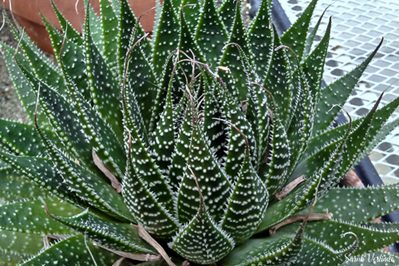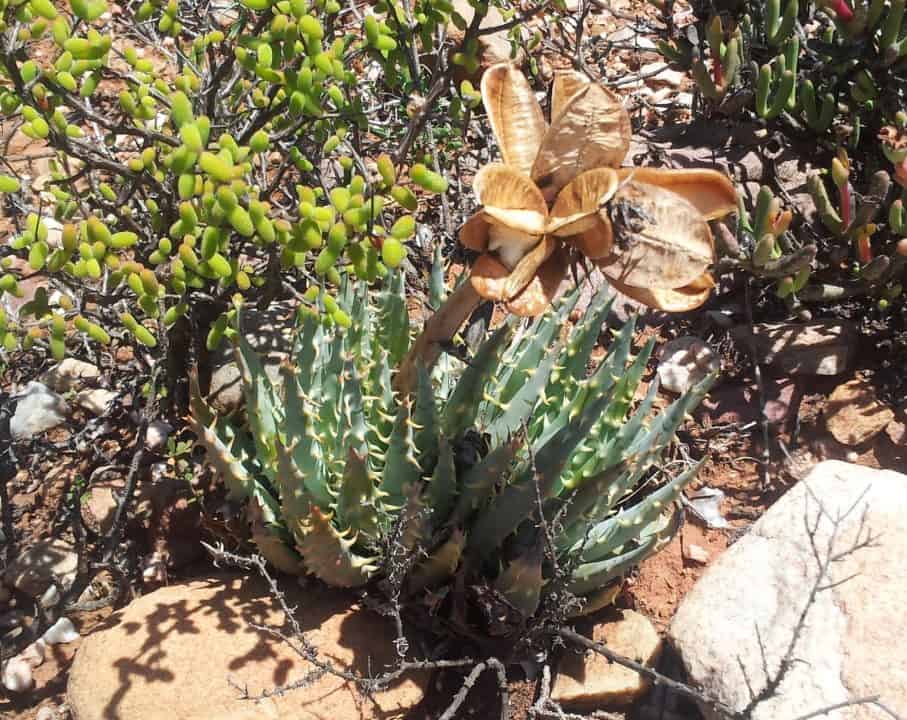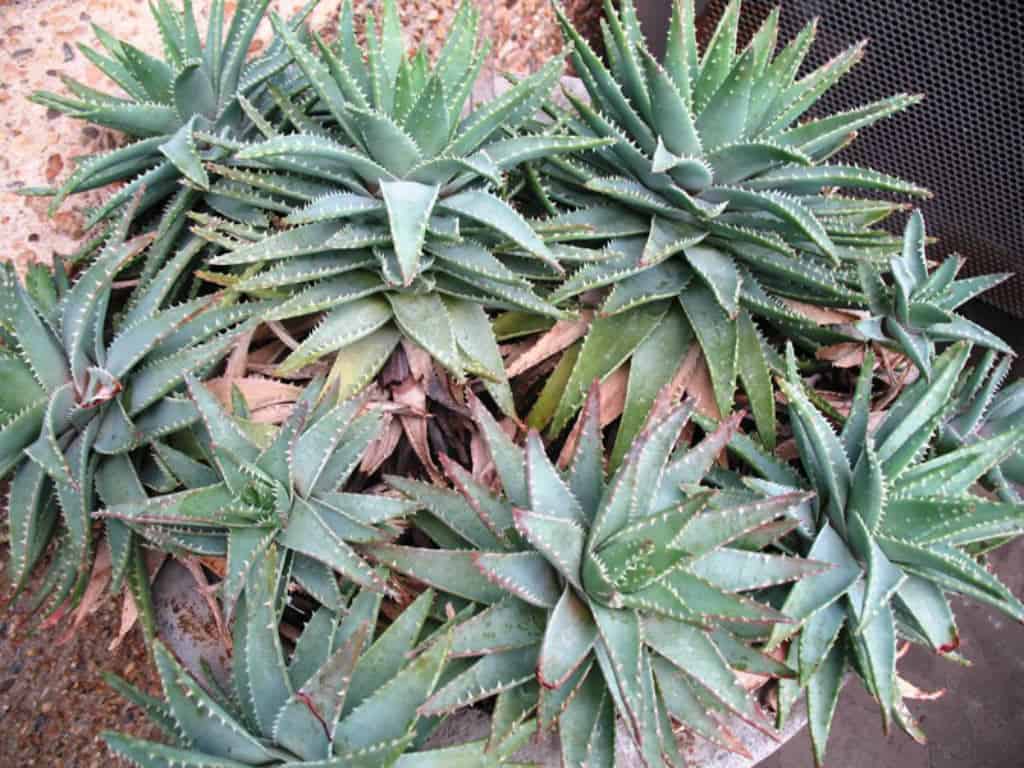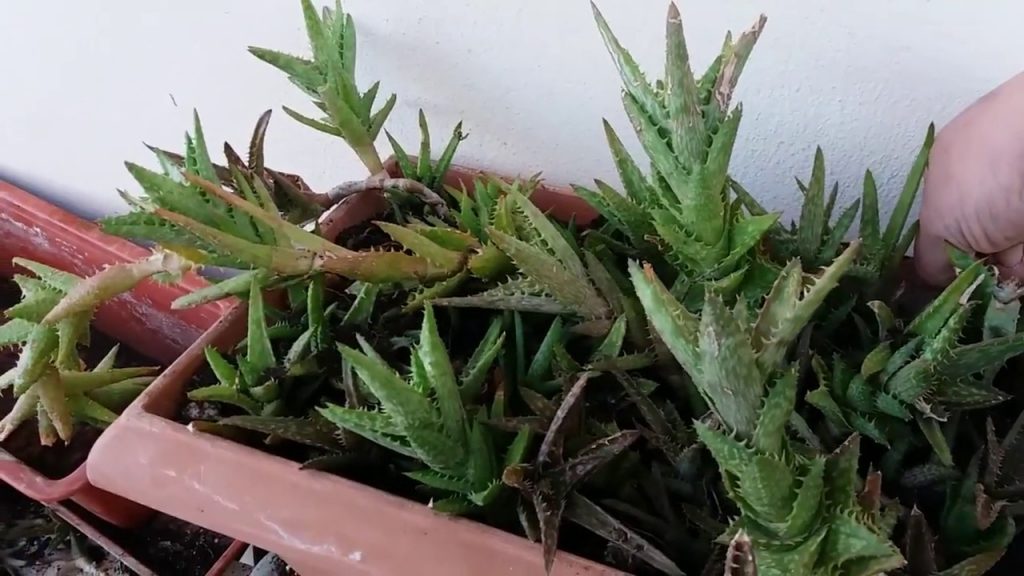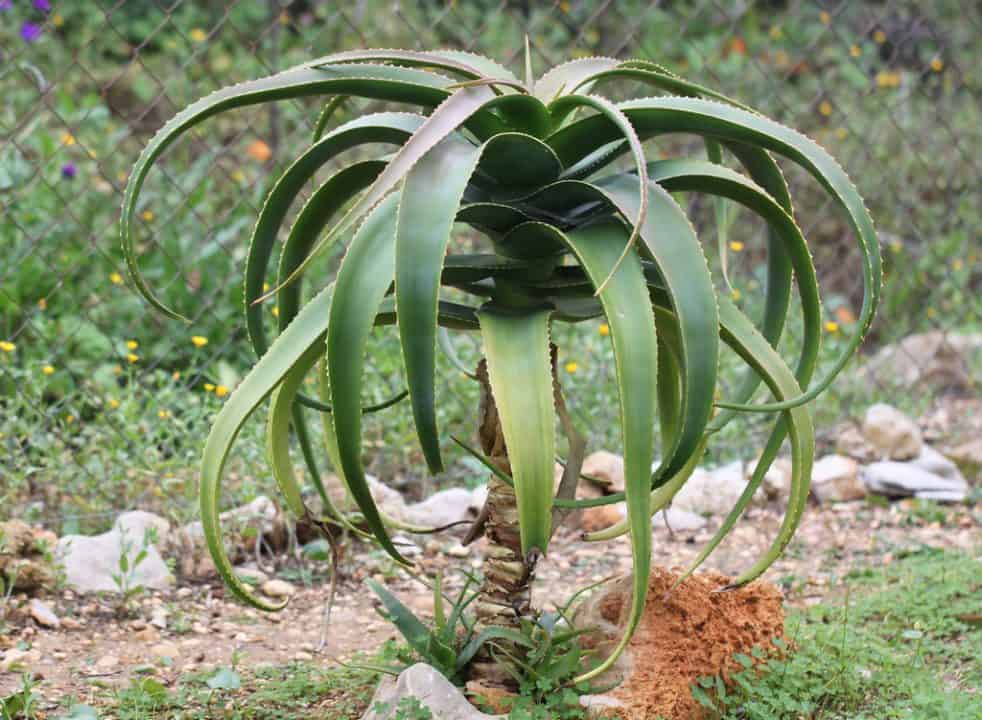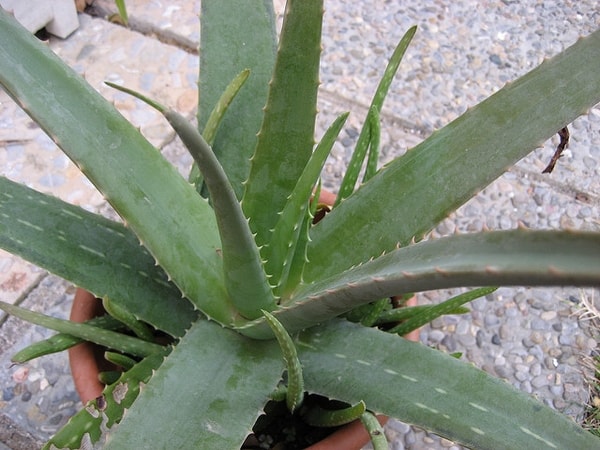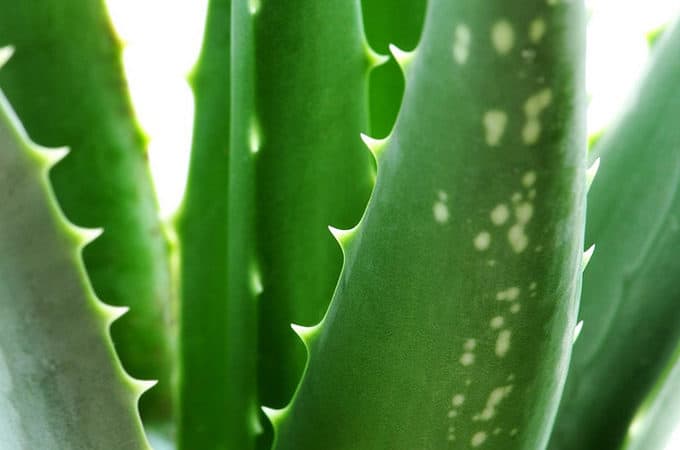Aristaloe aristata, also known as the lace aloe succulent, lace aloe plant, or aloe aristata, was first discovered by Kirstenbosch National Botanical Garden in South Africa in 1954 and then officially named by botanist Dr. C. A. Ritchie in 1957.
Aristaloe aristata belongs to the genus of Aloe and is closely related to the aloe vera species, with which it shares many similarities. The common name lace aloe was derived from the white lacelike pattern on the leaves of this relatively easy-to-grow succulent plant.
The lace aloe plant is easy to grow and can tolerate many conditions in its native habitat of South Africa. It makes an attractive houseplant with delicate, lace-like foliage that will bring brightness to any space you place it in, and it’s really easy to take care of.
Aristaloe aristata (also known as the lace aloe plant) can grow in U.S. Department of Agriculture plant hardiness zones 10 through 12, and it’s best grown outdoors in areas with reliably warm weather, although it can also be grown indoors in a pot or garden bed with adequate lighting and ventilation.
Origin and distribution
Aloe aristata is a member of the genus Aloe, which contains over 500 species of flowering succulent plants. The plant is native to South Africa and Lesotho, where it grows in rocky, mountainous habitats.
Aloe aristata is a popular ornamental plant and is cultivated in many parts of the world. It is propagated from cuttings or seeds. It can grow up to 1m tall and has an upright stem with rosettes at the base. These rosettes are composed of numerous linear leaves that grow up to 10cm long by 3cm wide.
The leaves are shiny green on top with dark spots underneath. Flowers appear all year round and typically range from pink to red in color. They are borne on short stalks that extend out of the leaf axils between them.
Aristaloe aristata propagation
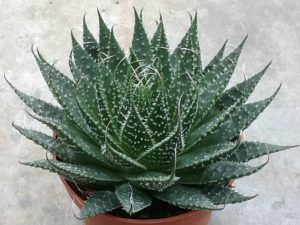
Aristaloe aristata are generally easy to propagate from offsets or leaf cuttings. To propagate from an offset, remove the offset with a sharp knife, making sure to include a small portion of the parent plant’s root system. Allow the offset to dry for a few days before replanting in a well-draining potting mix.
To propagate from a leaf cutting, cut a healthy leaf from the plant at its base. Allow the cutting to dry for a few days before replanting in a well-draining potting mix. Be sure to leave about 2 inches on the stem as this will be where roots form. Place in bright light and keep warm and moist until rooted.
The soil should not be allowed to dry out during this time period as this can kill off new roots. After rooting has occurred, place into a well-drained potting mix and water thoroughly. Cuttings may take several weeks to develop roots so patience is required.
When planted outdoors, make sure the area is protected from frost and direct sun exposure. If you’re growing lace aloe indoors, try placing it near a sunny window. However, avoid keeping it under full sunlight for long periods of time as this could cause leaf burn.
Aloe aristata care information
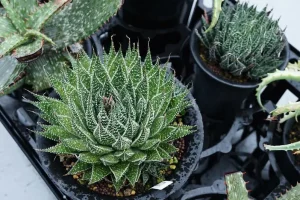
The Aristaloe aristata, or lace aloe plant, is a beautiful and easy-to-care-for succulent. These plants are native to South Africa and require very little water or attention to thrive. They can be grown both indoors and outdoors, in a pot or in the ground.
Light requirement
The lace aloe plant requires a lot of light to grow and thrive. However, it can also tolerate some shade. It is important to provide this plant with at least six hours of direct sunlight per day. If you live in an area with very hot summers, it is best to provide some afternoon shade to prevent the leaves from burning.
Soil/potting mix
For potting, use a well-draining cactus or succulent mix, or add extra perlite or pumice to regular potting soil. If you’re growing your plant in a container, choose one with drainage holes to prevent the roots from sitting in water.
Watering
Aristaloe aristata plant is a drought-tolerant succulent that requires very little water to survive. In fact, too much water can be detrimental to the plant, causing the leaves to rot. When watering your lace aloe, be sure to use only a small amount of water and allow the soil to dry out completely between watering sessions. A rule of thumb for this type of plant is to water when the top inch or so feels dry.
Fertilizer
When it comes to fertilizing your Aristaloe aristata, less is more. This plant is native to South Africa and does not require a lot of fertilizer to thrive. In fact, too much fertilizer can actually damage the plant. The best way to fertilize your lace aloe is to use a light hand and only do it every few months.
A general-purpose houseplant fertilizer should work just fine. This will help promote healthier growth while avoiding browning or wilting due to over-fertilization.
Temperature
The ideal temperature for an Aristaloe aristata plant is between 60 and 70 degrees Fahrenheit. If the temperature gets too hot or too cold, the plant will start to experience stress.
When the plant is stressed, it becomes more susceptible to pests and diseases. To avoid stressing your plant, make sure to keep it in a well-ventilated area that doesn’t experience extreme temperature changes.
Humidity
High humidity is essential for the Aristaloe aristata, as this succulent requires frequent watering. If the air is too dry, the leaves will begin to wilt and the plant will go into dormancy.
To increase humidity, you can mist the plant daily or set it on a pebble tray filled with water. Keep in mind that too much water can also be detrimental, so make sure the pot has adequate drainage.
The ideal humidity range is between 40 to 70% relative humidity. Temperatures should remain around 60°F – 75°F during the day and 55°F – 65°F at night.
Pruning
Although this plant is low-maintenance, it will benefit from light pruning after blooming. This will help to encourage new growth and keep the plant looking its best. To prune, simply remove any dead or dying leaves and stems.
You can also trim back any leggy growth to promote a fuller, healthier plant. If you have a lot of growth, you may want to trim off some of the bottom branches as well.
The lace aloe plant should be repotted every other year in spring with good potting soil for indoor plants and fertilized twice yearly with houseplant fertilizer during the active growing season. Keep your lace aloe outdoors for at least six hours each day when temperatures are above 55 degrees Fahrenheit.
When to repot
The best time to repot your Aristaloe aristata is in the spring before it begins to actively grow. This will give the plant time to adjust to its new pot and soil before the hot summer months. If you live in a cold climate, you can wait until early summer to repot. Just be sure to do it before the plant starts growing again.
It should only need one or two pots during the course of its life. When planting your lace aloe, you should use well-draining soil that has been mixed with peat moss or compost. You may also want to add a slow-release fertilizer like Osmocote® at this time as well.
Dormancy/Winter rest
Many succulents, including Aristaloe aristata, enter a state of dormancy during the winter months. This is a time of rest for the plant when growth slows and the plant takes on a more dormant appearance. While it’s important to allow your plant this time to rest, it’s also important to make sure it doesn’t get too cold.
If the temperature drops below 50 degrees Fahrenheit, your plant could be at risk of damage. There are many different ways you can provide warmth to your plant while still allowing it some winter sleep.
One way is to place a ceramic pot filled with water on top of the soil and use an incandescent light bulb or other heat sources close by. Another option is using fabric draped over pots with seeds, which will help protect them from frost.
To help keep warm air circulating around your plants, put a small space heater in an enclosed area like an unheated garage or shed where plants can grow without freezing.
Lace aloe flower & fragrance
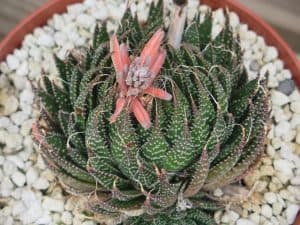
The Aristaloe aristata, or lace aloe plant, is a beautiful succulent that produces lovely fragrant flowers. The plant is native to South Africa and can be found in a variety of colors, including white, pink, and yellow. The flowers of the plant are known for their sweet scent and make a great addition to any garden.
Growth rate
The growth rate of the Aristaloe aristata is pretty fast. In just a few weeks, you can see new leaves and flowers blooming. The plant does best in bright, indirect sunlight but can also tolerate low light conditions.
It’s important to keep the soil moist but not wet and to fertilize every few weeks during the growing season. With proper care, your lace aloe plant will thrive and bring you lots of enjoyment.
Toxicity
Aristaloe aristata is a beautiful, unique plant that is unfortunately toxic to humans and animals. All parts of the plant are poisonous, and ingesting even a small amount can cause vomiting, diarrhea, and abdominal pain.
In severe cases, the plant can cause liver damage, paralysis, and death. If you suspect that someone has ingested Aristaloe aristata, call poison control immediately.
USDA hardiness zones
Aristaloe aristata thrives best in USDA hardiness zones 10 to 11. The plant is drought-tolerant and does not require much care.
Pests and diseases
Although the Aristaloe aristata plant is relatively resistant to pests and diseases, it can be susceptible to mealybugs, scale, and spider mites. These pests can cause damage to the leaves of the plant, which can lead to yellowing and wilting.
To prevent infestation, it’s important to regularly inspect your plant and quarantine any new plants before adding them to your collection. It’s also a good idea to use an insecticidal soap spray as soon as you notice signs of pest activity. You should only use this treatment every two weeks or so, as frequent use can lead to dehydration in the plant.
